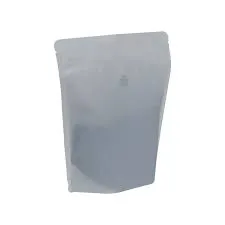- Afrikaans
- Albanian
- Amharic
- Arabic
- Armenian
- Azerbaijani
- Basque
- Belarusian
- Bengali
- Bosnian
- Bulgarian
- Catalan
- Cebuano
- chinese_simplified
- chinese_traditional
- Corsican
- Croatian
- Czech
- Danish
- Dutch
- English
- Esperanto
- Estonian
- Finnish
- French
- Frisian
- Galician
- Georgian
- German
- Greek
- Gujarati
- haitian_creole
- hausa
- hawaiian
- Hebrew
- Hindi
- Miao
- Hungarian
- Icelandic
- igbo
- Indonesian
- irish
- Italian
- Japanese
- Javanese
- Kannada
- kazakh
- Khmer
- Rwandese
- Korean
- Kurdish
- Kyrgyz
- Lao
- Latin
- Latvian
- Lithuanian
- Luxembourgish
- Macedonian
- Malgashi
- Malay
- Malayalam
- Maltese
- Maori
- Marathi
- Mongolian
- Myanmar
- Nepali
- Norwegian
- Norwegian
- Occitan
- Pashto
- Persian
- Polish
- Portuguese
- Punjabi
- Romanian
- Russian
- Samoan
- scottish-gaelic
- Serbian
- Sesotho
- Shona
- Sindhi
- Sinhala
- Slovak
- Slovenian
- Somali
- Spanish
- Sundanese
- Swahili
- Swedish
- Tagalog
- Tajik
- Tamil
- Tatar
- Telugu
- Thai
- Turkish
- Turkmen
- Ukrainian
- Urdu
- Uighur
- Uzbek
- Vietnamese
- Welsh
- Bantu
- Yiddish
- Yoruba
- Zulu
different food packaging materials
Different Food Packaging Materials A Comprehensive Overview
The way we package food plays a critical role in preserving its quality, ensuring safety, and enhancing convenience for consumers. Food packaging not only protects food from spoilage and contamination but also provides information about the product, enhances shelf life, and serves marketing purposes. A variety of materials are used in food packaging, each with its own set of advantages and disadvantages. This article explores the different food packaging materials, including their uses, benefits, and challenges.
1. Plastic Packaging
Plastic is one of the most commonly used materials in food packaging today. It is lightweight, flexible, and relatively inexpensive to produce. Plastics can be tailored to meet specific needs; for example, polyethylene (PE) is often used for bags and wraps while polyvinyl chloride (PVC) is commonly used in bottles and jars. Additionally, plastic packaging can be barrier-coated to enhance its ability to resist moisture, air, and light, extending the freshness of the contents.
However, the environmental impact of plastic is a growing concern. Many plastics are not biodegradable and contribute to pollution in our oceans and landfills. The increasing awareness of these issues has prompted the industry to explore biodegradable and recyclable options, such as bioplastics made from renewable sources.
Glass has been a traditional packaging material for food and beverages for centuries. It is often preferred for its ability to preserve flavor and prevent chemical leaching, making it suitable for products like sauces, jams, and beverages. Glass is impermeable to air and moisture, ensuring that food items remain uncontaminated and maintain their original quality over time.
The drawbacks of glass packaging, however, include its weight and fragility. Breakable glass can pose safety risks and increase shipping costs. Furthermore, the energy-intensive production process of glass can have a substantial environmental impact. Nonetheless, glass is recyclable and can be reused indefinitely without loss of quality, making it an environmentally friendly choice for packaging.
3. Metal Packaging
Metal, particularly aluminum and tinplate, is widely used in food packaging for its durability and long shelf life. Canned foods, beverages, and processed foods often utilize metal packaging because it protects contents from light, air, and microorganisms. Metal cans are typically lightweight and can be stacked, making them efficient for storage and transportation.
different food packaging materials

One major downside of metal packaging is the potential for corrosion, which can affect the taste and safety of the food inside. Innovative technologies, such as coatings and linings, have been developed to address this issue. Additionally, like glass, metal is recyclable, and recycling aluminum cans significantly reduces energy consumption compared to producing new ones.
4. Paper and Cardboard Packaging
Paper and cardboard are commonly used for packaging dry foods, snacks, and some beverages. These materials are biodegradable and recyclable, making them more environmentally friendly than many plastic alternatives. Paperboard packaging, such as cereal boxes and cartons, is lightweight, versatile, and readily customizable, allowing for attractive designs that enhance brand visibility.
However, the effectiveness of paper and cardboard in protecting food can vary. They are often treated with coatings to provide moisture and grease resistance, but these coatings can hinder recyclability. Additionally, paper materials are susceptible to damage from water and humidity, limiting their application in certain contexts.
5. Composites and Multi-layer Packaging
Advancements in food technology have led to the development of composite and multi-layer packaging materials. These materials combine the benefits of various substances to create packaging that optimizes protection while minimizing environmental impact. For example, a combination of plastic, aluminum, and paper can provide excellent barrier properties, while still being lightweight and cost-effective.
Despite their benefits, the complexity of composite materials can pose challenges for recycling processes. Proper disposal and recycling methods are essential to mitigate potential environmental issues associated with their use.
Conclusion
Selecting the right packaging material for food products is a crucial decision that balances safety, quality, cost, and environmental impact. As consumers become increasingly conscious of sustainability issues, the food packaging industry is advancing towards more eco-friendly solutions. By understanding the pros and cons of various packaging materials, manufacturers can make informed choices that cater to both consumer needs and environmental responsibilities, paving the way for a more sustainable future in food packaging.













